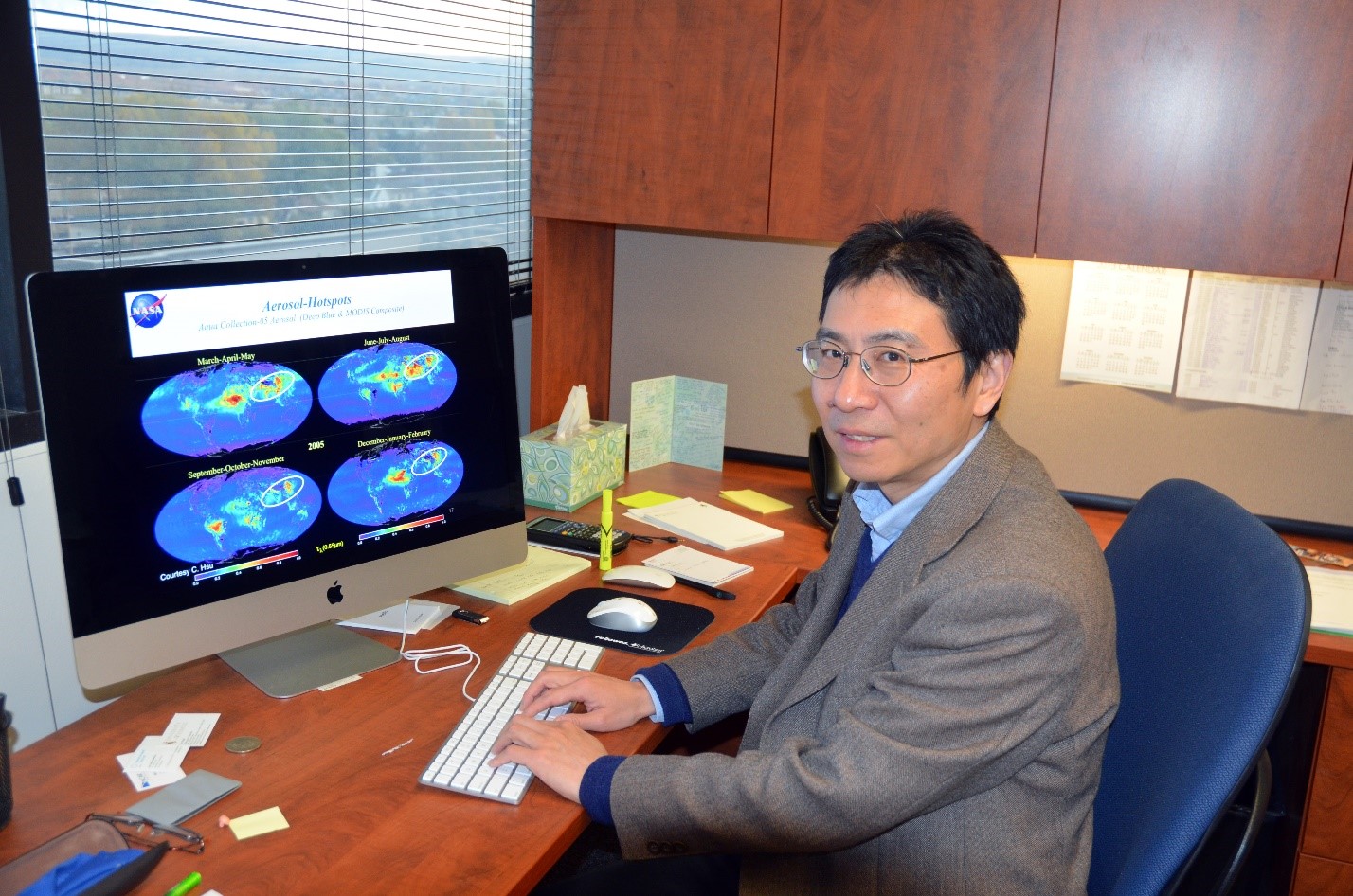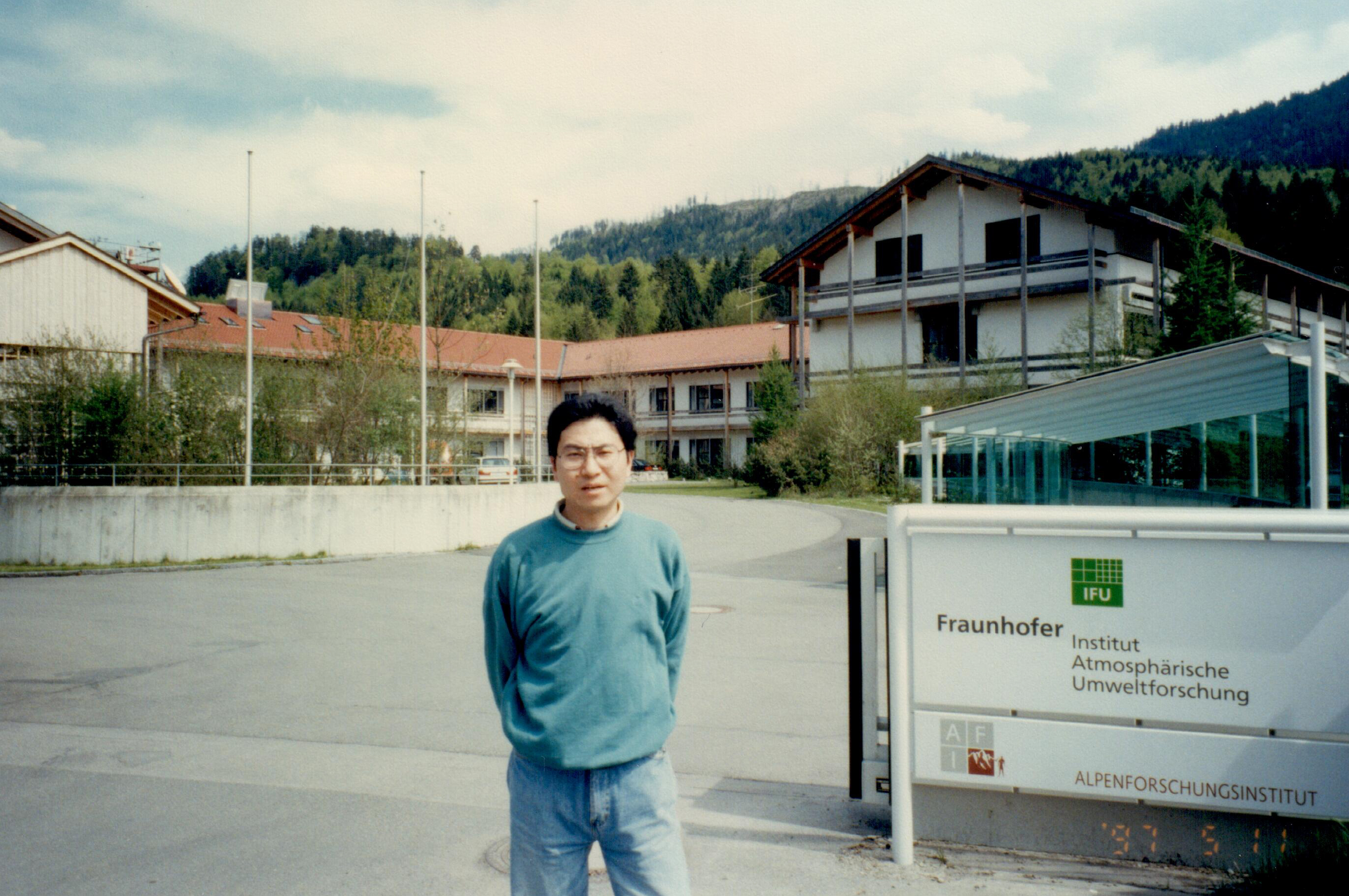UEC Profile: A Student of Aerosol-Cloud Interactions
Published: 15 April 2019
A highly cited scientist is unraveling the puzzle of mixed-phase clouds and improving how aerosols are represented in earth system models
This is the third article in a series of 2019 profiles on members of the ARM User Executive Committee (UEC).

Tiny particles called aerosols—sea salt, mineral dust, sulfates, black carbon, and more—are swept into the atmosphere by wind or human activity. From there, they directly affect how solar and terrestrial radiation are scattered and absorbed.
In other words, these humble, short-lived motley motes—the product, perhaps, of a raindrop splashing into soil—have an outsize influence on the Earth’s energy balance. That’s an accounting of how much heat goes in and out, which determines how hot or cold our land, oceans, and surface air become.
Because they are also the building blocks of ice and clouds, aerosols indirectly affect the planet’s energy balance. Their size, lifespan, and spatial distribution can alter the microphysical and radiative properties of clouds themselves, which are the planet’s shades and filters.
It is into this complicated realm of atmospheric science that Xiaohong Liu has plunged his life’s work.
The endowed chair in climate science at the University of Wyoming, Liu is a longtime investigator of the complex and consequential interactions of clouds, aerosols, precipitation, and radiation. Broadly, he asks: What are the effects of those interactions on climate?
Liu and his research group develop multiscale models of clouds and aerosols. They also improve aerosol parameterizations—streamlined mathematical representations—of clouds and aerosols in earth system models.
Much of their data comes from the Atmospheric Radiation Measurement (ARM) user facility, funded by the U.S. Department of Energy (DOE). In the Earth’s most critical climate zones, ARM manages fixed and portable atmospheric observatories, whose continuous measurements are processed, evaluated, and then stored in a permanent archive.
[perfectpullquote align=”left” bordertop=”false”]”I use a lot of ARM data to improve and validate models.” –Xiaohong Liu[/perfectpullquote]
“I use a lot of ARM data to improve and validate models,” says Liu.
Even after decades of intense study, aerosol-cloud interactions remain the greatest sources of uncertainties in models designed to predict future earth system change.
Most such models incorporate treatments of aerosols and their effect on climate, but can still get things wrong. For instance, he says, without the right validation by observational data, models can misrepresent the ice crystal generation and growth processes in mixed-phase clouds, which in turn can affect predictions of sea ice loss in the Arctic.
“These kinds of processes are not well understood,” says Liu.
Investigating Aerosols and Mixed-Phase Clouds

Aerosols are difficult to understand with good reason. Unlike other trace gases, which can persist in the atmosphere for years or centuries, aerosols have lifespans measured in days.
They also scatter in large spatial variations, come in a wide spectrum of sizes, contain multiple chemical species, and change—“age,” in science parlance—in complicated physical and chemical ways.
The complexity of aerosol behavior ratchets up considerably in mixed-phase clouds, where liquid and ice coexist in temperatures below zero. Such clouds, abundant in the Earth’s frigid high latitudes and above the Southern Ocean, are a research specialty of Liu’s.
“Mixed-phase clouds are a complex example,” he says.
Liu and a co-investigator—Zhien Wang, a remote sensing expert at the University of Colorado, Boulder—are six months into a three-year research project funded by DOE’s Atmospheric System Research program. They are using ARM observations to investigate how to improve representations of mixed phase clouds and aerosol interactions at high latitudes.
Beyond what ARM provides from its North Slope of Alaska atmospheric observatory and its campaigns in the Southern Hemisphere, “there is not much data” for studying mixed-phase clouds, says Liu.
Sharing Expertise

There is nothing mixed about Liu’s passion for working to improve the kinds of models that steer climate predictions.
He was a key member of the team at the National Center for Atmospheric Research (NCAR) that developed versions 5 and 6 of the NCAR Community Atmosphere Model—CAM5 and CAM6 (the latest version, released in 2018).
Liu has also been part of DOE’s Energy Exascale Earth System Model (E3SM) project. E3SM is a computationally advanced climate-energy model intended to improve predictions on both weather and climate scale.
With all this experience to offer, in January 2019 Liu started his term as a member of ARM’s User Executive Committee, an advisory group that is the official voice of the user community in its interactions with ARM management. Members serve up to four-year terms; elections occur every two years.
As a new committee member, says Liu, “I can provide some advice on what kind of data is important to modelers. It’s important to be part of the community.”
‘A Very Wide Science’
Liu, the son of an army officer in Mao-era China, was born in the 1960s. His boyhood home was in Anhui, a province in eastern China known for the Huangshan (Yellow Mountain) range. Its peculiar granite peaks were long celebrated in traditional Chinese painting.
“When I grew up, China was very poor,” says Liu. It was the time of the Cultural Revolution, when universities were shuttered.
He was still a boy when the family moved to a town near Shanghai, in Jiangsu province, where he received his K-12 education.
Still very young, Liu was attracted to the sciences, which he says is a reflection of Chinese cultural preference for physics, chemistry, and mathematics.
In middle school, a teacher advised him that one interesting way to pursue physics was through meteorology—the course of study Liu choose when entering Nanjing University, one of the top universities in China.
“I’m pretty lucky,” he says. “I went to college in 1982,” just as China was gradually redeveloping its education system.
He went on to earn three degrees at Nanjing University: B.S. (highest honors, 1986), M.S. (1989), and PhD (1992).
From the beginning, Liu’s course of study was atmospheric science, a field he describes as having some of everything, especially in the realm of aerosols—physics, chemistry, mathematics, and even biology.
“It’s a very wide science,” says Liu. “I like that. You can touch on everything. I think it’s perfect for me.”
His PhD dissertation was on aerosol activation in warm clouds. At that time, aerosol-cloud studies were a sleepy corner of atmospheric sciences, says Liu, though just a few years later—with a burgeoning interest in the science of climate change—“it was a very hot topic.”

He was an Alexander von Humboldt Research Fellow in Germany from 1996 to 1997—his first travel to the West—and in 1998 was a visiting scientist at the University of Washington. After that, for two years, Liu did research in atmospheric physics at the Chinese Academy of Sciences in Beijing.
Travel to the West to pursue science was a generational dream come true, says Liu. He remembers that when China opened to the outside world, there was a fervor among his peers to study in the West.
Deep Dives Into Modeling
The first science stop for Liu in the United States was the University of Michigan, from 2000 to 2006, where he worked with applied mathematician and aerosols researcher Joyce Penner. It was also where he first dealt with earth system models.
From 2006 to 2013, Liu worked at Pacific Northwest National Laboratory (PNNL) in Richland, Washington.
“The national lab is a very good environment for people to grow,” says Liu of PNNL. “It has a very strong aerosols and clouds team—very diverse.”
At PNNL, Liu was the lead author on what he considers his most influential and memorable paper—a 2012 study in Geoscientific Model Development written with PNNL colleagues and others on representing aerosols in CAM5.
“We developed an aerosols model,” he says, “and it’s highly cited.”
Liu has 170 peer-reviewed papers to his credit. From 2014 through 2018 he appeared on an annual list of highly cited researchers published by Clarivate Analytics, and formerly assembled by Thomson Reuters.
He calls the University of Wyoming “a little different career path,” partly because of teaching duties, but also a place that is “good for research.”
His path after PNNL is also different because the university town of Laramie, Wyoming (population 30,000), can seem isolated, where the winter snow is sometimes “a little too much,” says Liu. “But I like the quiet in Wyoming.”
For him, is there life outside science?
“I swim,” he says of an exercise habit he started 25 years ago in China. “It keeps me energetic—for research.”
Keep up with the Atmospheric Observer
Updates on ARM news, events, and opportunities delivered to your inbox
ARM User Profile
ARM welcomes users from all institutions and nations. A free ARM user account is needed to access ARM data.


















